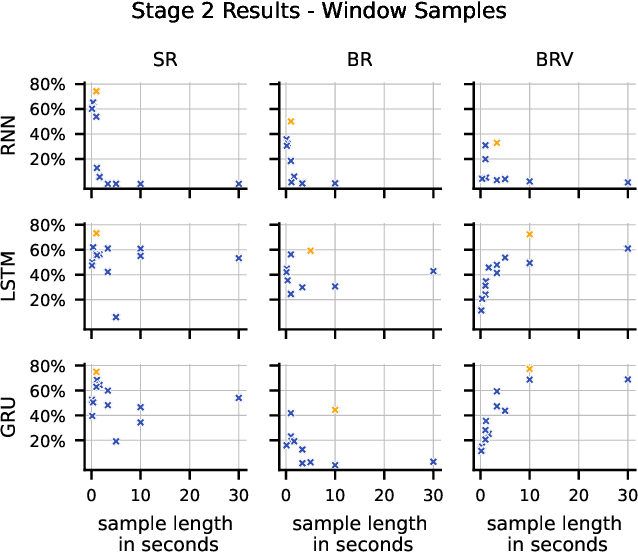Christian Schell
Extensible Motion-based Identification of XR Users with Non-Specific Motion
Feb 15, 2023Abstract:Recently emerged solutions demonstrate that the movements of users interacting with extended reality (XR) applications carry identifying information and can be leveraged for identification. While such solutions can identify XR users within a few seconds, current systems require one or the other trade-off: either they apply simple distance-based approaches that can only be used for specific predetermined motions. Or they use classification-based approaches that use more powerful machine learning models and thus also work for arbitrary motions, but require full retraining to enroll new users, which can be prohibitively expensive. In this paper, we propose to combine the strengths of both approaches by using an embedding-based approach that leverages deep metric learning. We train the model on a dataset of users playing the VR game "Half-Life: Alyx" and conduct multiple experiments and analyses. The results show that the embedding-based method 1) is able to identify new users from non-specific movements using only a few minutes of reference data, 2) can enroll new users within seconds, while retraining a comparable classification-based approach takes almost a day, 3) is more reliable than a baseline classification-based approach when only little reference data is available, 4) can be used to identify new users from another dataset recorded with different VR devices. Altogether, our solution is a foundation for easily extensible XR user identification systems, applicable even to non-specific movements. It also paves the way for production-ready models that could be used by XR practitioners without the requirements of expertise, hardware, or data for training deep learning models.
Comparison of Data Representations and Machine Learning Architectures for User Identification on Arbitrary Motion Sequences
Oct 02, 2022



Abstract:Reliable and robust user identification and authentication are important and often necessary requirements for many digital services. It becomes paramount in social virtual reality (VR) to ensure trust, specifically in digital encounters with lifelike realistic-looking avatars as faithful replications of real persons. Recent research has shown great interest in providing new solutions that verify the identity of extended reality (XR) systems. This paper compares different machine learning approaches to identify users based on arbitrary sequences of head and hand movements, a data stream provided by the majority of today's XR systems. We compare three different potential representations of the motion data from heads and hands (scene-relative, body-relative, and body-relative velocities), and by comparing the performances of five different machine learning architectures (random forest, multilayer perceptron, fully recurrent neural network, long-short term memory, gated recurrent unit). We use the publicly available dataset "Talking with Hands" and publish all our code to allow reproducibility and to provide baselines for future work. After hyperparameter optimization, the combination of a long-short term memory architecture and body-relative data outperformed competing combinations: the model correctly identifies any of the 34 subjects with an accuracy of 100\% within 150 seconds. The code for models, training and evaluation is made publicly available. Altogether, our approach provides an effective foundation for behaviometric-based identification and authentication to guide researchers and practitioners.
 Add to Chrome
Add to Chrome Add to Firefox
Add to Firefox Add to Edge
Add to Edge